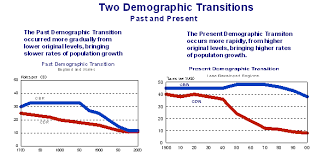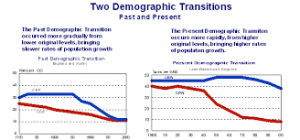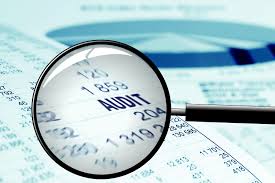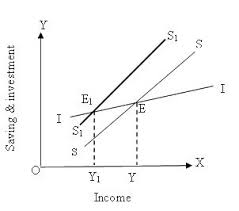The United Nations Population Fund (UNFPA) defines demographic dividend as “the economic growth potential that can result from shifts in a population’s age structure, mainly when the share of the working-age population (15 to 64) is larger than the non-working-age share of the population (14 and younger, and 65 and older)”. Demographic dividend has been extensively used in association with India. We all talk about how India’s comparative advantage is it demographic dividend, but have we ever wondered about this came to be?
India is home to one-sixth of the globe’s population. There are several doubts however, as to how such a rapid population growth took place despite the fact that there is a decent and reliable amount of data available. The census data shows that population growth between:
Population growth in India saw a rapid acceleration post 1921. However, according to economists Vasaria & Vasaria there were several limitations to population census during this period which led to incorrect recording of population data. In the first official census carried out in 1881, the enumeration of the population of Central India, Punjab, Hyderabad and Rajasthan was not conducted, despite the fact it was home to 33 million people. Also, 12 million more people were not covered in this enumeration. In 1872, the census of India was reported at 203 million, however was later corrected to 236 million. Moreover, the population of Assam and Bengal up to 1872 was estimated at 40 million, however, in the 1872 census the population was recorded at 65.75 million. These figures indicate the discrepancies in the census recording during the period.
According to Vasaria & Vasaria an underdeveloped country has high birth rates, as well as, growth rates. Developing countries have high birth rates and low death rates and developed countries have low birth and death rates (minimum). Up to 1921, the population growth was slow. This can be shown as:
YEAR GROWTH (census) GROWTH (Davis)1
1881 2.07 0.09
1921 0.09 0.09
After 1921, the population grew at a very rapid pace and population explosion took place. Thus, 1921 is known as the year of great divide.
1931 1.01 1.01
1941 1.40 1.40
Population growth in India in the 20th century can be attributed more to fertility and mortality rates rather than migration. According to economist Sumit Guha, the population grew on account of declining mortality rates. His observations were supported by economist Kinslay Davis who studied crude death rates during the period 1911-1948. He stated that there was an “unmistakable downward trend” after 1918. He also studied the infant mortality rates and stated that the data, “reveal a high point in 1918 and gradually declined thereafter”. He also realised that during this period there were numerous deaths that were not accounted for and thus, made the required changes and reported a crude birth rate of 40 per 1000 individuals, with a mortality rate slightly less than this. According to him, this mortality rate fell significantly post 1918. His finds were corroborated by Sumit Guha, who studied the crude death rates post 1892. He reported a crude death rate of 30 per 1000 individuals, which in the next 30 years fell further to 24.7 and 22.4.
Therefore, one is able to infer that the acceleration in population growth in India was on account of falling mortality. This is how our population came to be the second largest in the world.





21 Comments. Leave new
Good article supported by factual data. well done.
Well presented
very well researched article.. well done!
Well researched, informative!
well presented 🙂
informative !!!
Worth reading.
well presented.
Informative article…..great work!!
Great work!
Well explained!
Very well presented and beautifully explained
Well Researched 😀
Good work 😀
thanks guys 🙂
Good work
Nice article and well written.
nice article!
Having a large population is not bad in all respects.
It also has some usefulness.
India , because of its large population has very large amount of manpower
good work
nice work
Well researched.